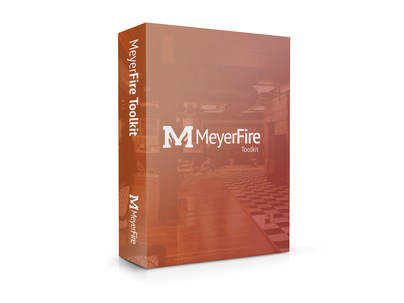

How is it determined whether a steel structure will have spray-applied fire resistant materials?
I'm creating performance specification for a bid-set on a project, so I don't yet have input from a structural engineer. The project is a warehouse with large fire loads and exposed steel.
Recently, a project out for bid is a low-rise office building, 100% sprinklered with a wet-pipe system that is concealed by a suspended ceiling. On that project, all of the structural steel has spray-applied fire resistant materials.
What drives the issue of spray-applied fire resistive materials?
Thanks in advance.
Corey Eppinghaus 4/28/2022 08:08:05 amIn Canada this would be dictated by the 3.2.2 building designation or if the floor is a fire separation with a FRR, some roof systems also require it under the 3.2.2 but adding sprinklers can wave that requirement. So in short the code that has been adopted by the AHJ would dictate when you need to protect steel.
Glenn Berger 4/28/2022 08:08:27 amThe use of spray-applied fire resistive materials is derived from a code analysis. For the IBC, you need to match up the occupancy, with the building area, number of floors, etc. and then determine the applicable construction type. Once know if fire resistive construction is required, then the method of achieving the rating is up to the design team.
4/28/2022 08:10:56 amPer the IBC Unprotected non combustible materials can be used for construction types up to type IIB. after that various aspects of the structure must be protected in some manner. if the structure exceeds the allowable area or height for IIB then you need to start providing protection.
Todd E Wyatt 4/28/2022 08:13:48 amThe Type of Construction (TOC) of the building determines the required fire-resistance rating (FRR) of the "Building Elements" (e.g. structure).
The 2021 IBC identifies the following TOCs :
Types I : Fire Resistive (High-Rises & Mid-Rises)
Type II : Non-Combustible (NC) & Limited-Combustible (LC)
Type III : Exterior Walls : NC & LC & Interior Walls : Any Material
Type IV : Mass Timber and/or NC & LC
Type V : Any Material (e.g. Wood)
The "Building Elements" include the following :
Primary Structural Frame
Bearing Walls (Exterior/Interior)
Nonbearing Walls & Partitions (Exterior) - See Table 705.5
Nonbearing Walls & Partitions (Interior)
Floor Construction & Associated Secondary Structural Members
Roof Construction & Associated Secondary Structural Members
Depending on the TOC, these "Building Elements" require different hourly ratings from 3 hours to 0 hours. Sprayed fire-resistive materials (SFRMs) are passive fire-protection materials that can achieve this required FRR of the structure.
TOC comes into play when determining the "allowables" (maximum building area, maximum number of stories, and maximum building height) based on the Occupancy Classification(s) of the building and whether the building is sprinklered or not.
4/28/2022 08:50:02 amFireproofing is applied to add the fire resistance rating. Using IBC (2015) Table 601, you can determine your type of construction and the respective fire-resistance rating. For example, if you are Type IIB, you are not required to apply fireproofing as there is a 0-hour structural frame requirement.
For new construction, there is a lot of consideration that goes into what construction type the building will be. For example, Chapter 5 outlines general building heights and areas permitted. The following tables below can be used to ensure your occupancy, size, and height are allowed per Construction Type.
- IBC (2015) Table 504.3 outlines the Allowable Building Height per type of construction
- IBC (2015) Table 504.4 outlines the Allowable Number of Stories per type of construction
- IBC (2015) Table 506.2 outlines the Allowable Area per type of construction
Now, for your case. Let’s deem your warehouse as an S-2 occupancy. If you can fall under the restrictions of a Type IIB construction type, you will not need fire proofing: building height under 75 (if sprinklered), 4 stories and under and under 104,000 square feet (not including possible increases based on frontage). Once you go above any of the above, you will need to follow the fire rating outlined in Table 601.
4/28/2022 08:54:10 amThe requirement is via IBC. Once the design team determines that fire-resistive measures are needed, the spray applied fire resistive material is an option.
Personally, I avoid terms like "fire-proof" as in my experience, few things are truly fire proof. Everything reacts in some way to an impinging fire.












MeyerFire.com is a startup community built to help fire protection professionals shine.
Our goal is to improve fire protection practices worldwide. We promote the industry by creating helpful tools and resources, and by bringing together industry professionals to share their expertise.
MeyerFire, LLC is a NICET Recognized Training Provider and International Code Council Preferred Education Provider.
All text, images, and media Copyright © 2016-2024 MeyerFire, LLC
We respect your privacy and personal data. See our Privacy Policy and Terms of Service. The views, opinions, and information found on this site represent solely the author and do not represent the opinions of any other party, nor does the presented material assume responsibility for its use. Fire protection and life safety systems constitute a critical component for public health and safety and you should consult with a licensed professional for proper design and code adherence.
Discussions are solely for the purpose of peer review and the exchange of ideas. All comments are reviewed. Comments which do not contribute, are not relevant, are spam, or are disrespectful in nature may be removed. Information presented and opinions expressed should not be relied upon as a replacement for consulting services. Some (not all) outbound links on this website, such as Amazon links, are affiliate-based where we receive a small commission for orders placed elsewhere.